Lee Bolman once said, “a vision without a strategy remains an illusion.” Developing a successful brand strategy is an essential part of reaching your business objectives. A well-thought-out process increases your chances of success and ensures your branding efforts align with the objectives of your company.
Powerhouse brands don’t just pop up overnight. A lot of work goes on behind the scenes in these companies. Every move is based on well-thought-out processes and tasks.
Curious to find out how to develop a brand strategy that takes your brand on the right path? Stick around. We’ve put together the ultimate branding strategy guide.
Brief History of Branding
Sometime in the mid-1700s, the seeds of the biggest technological evolution were sown in England. The Industrial Revolution. It completely shifted people’s lives all over the world. Powerful machines paved the way for mass production.
Prior to that, consumers didn’t have many products to choose from. But mass production changed that. It brought forth plenty of products from different manufacturers. To attract customers, manufacturers began using logos or slogans to stand out.
Fast-forward to the 1880s, when J. Walter Thompson founded his agency and had a light-bulb moment: Why not hire writers and artists to create engaging content for businesses? And this is the start of branding as we know it.
Given that mass production was peaking, companies couldn’t rely solely on their products. They needed some extra competitive advantage. They had to evoke something in consumers’ minds, to distinguish themselves from their competition.
And that’s how branding came about.
What Is a Brand?

Photo by Towfiqu barbhuiya on Unsplash
Brand. Branding. These are terms we are accustomed to. We use them daily, and yet a lot of confusion and misunderstanding revolves around the concept of branding.
Sometimes, it’s easier to understand a concept by understanding what it is not. According to Marty Neumeier, author of the “The Brand Gap”:
- A brand is NOT a logo. The logo is merely a symbol, a visual representation of your brand. Sure, it influences the way people perceive your business. It is one building block of your brand. A piece of the puzzle.
- A brand is NOT the product or service your business sells. Brands are built through emotions, experiences, and expectations. Therefore, a good product alone won’t suffice. Today, that doesn’t cut it anymore. You need to build a brand around your products.
- A brand is NOT what you say it is. While there are certain elements that you control and create, such as logos, fonts, or messaging, the brand’s image is ultimately construed by individuals. What your business can do is act in accordance with the brand’s heart and soul. That will determine people’s perception of your brand.
So, what is a brand?
More than anything, a brand is an emotional experience. A perception. It’s that first feeling people get when thinking about it. And each person builds their perception of it.
You can say you have succeeded in building a brand when everyone has a shared perspective of it. That’s where branding strategy and management come in, as they allow you to put together coherent actions and policies and follow through with them. That’s how you succeed in getting customers’ brains in sync.
Brand Strategy, huh?
In short, a brand strategy is a route. It’s the roadmap you set for your brand, and it prevents your brand from derailing. Some brands just happen.
Successful brands are built, guided by analysis, coherent goals, collaboration, and policies. Just as remarkable buildings, like the Sagrada Família, are built based on a plan, so are remarkable brands.
Ultimately, a brand strategy answers some questions:
- Who are we?
- Why are we?
- Who are we here for?
- Where are we headed?
- What makes us different?
- What are we committed to?
- Why should anyone care?
- What’s our personality?
- What’s our message?
Answer these questions and you’ve got your brand strategy.
Approaches to Brand Strategy
People don’t just buy products anymore. They purchase from brands they identify with, that share their values, and that makes them feel understood. A solid brand strategy allows you to provide that to your customers.
The brand strategy process is a blend between creativity and science, and it’s rooted in methodology. There are endless approaches to branding, as there are endless definitions of branding.
Today, we are going to go over a few of them.
Experiential Branding
This is a brand strategy that focuses on providing experiences to customers. Experiential branding is all about creating sensory interactions with your target audience, to influence their perception of the brand. Festivals usually employ an experiential branding approach. Each festival has a unique vibe, a different way of making you feel. You remember the experience you’ve had. And it makes you want to go back.
Self-expression branding
Within this approach, brands are built in collaboration with consumers. Consumers actively participate in creating the meanings and symbols associated with the brand. They identify with these meanings, and they become a part of their identity. Are you a Samsung or an Apple type of person? Each brand reflects a different personality, right? This is self-expression branding.
Asset branding
Brands that follow this approach typically focus on producing memorable brand assets and exposing consumers to those assets in various settings. One example would be Burberry. Even though they have plenty of brand assets, the most iconic one is the check pattern, which people associate with class and elegance.
 Source
SourceActivism branding
Within this approach, brands take a public stance on various societal issues. Nowadays, consumers look for brands that share their values. Brands that aren’t afraid to speak about societal issues. Brands can start important discussions in our society and even influence public policies. This is a pretty risky strategy, so it’s not for the faint of heart. For some brands, it works.
One example would be Dove, a purpose-led brand that has been speaking out about unrealistic beauty standards and self-esteem since 2004, when its “Real Beauty” campaign launched. Dove revolutionized the beauty advertising industry, proving that women identify with these issues and prefer brands that speak out about the impact of the media on body image.
 Source
SourcePersonality branding
This one is pretty easy in theory. A key component of this approach is audience research. Once you get to know who your audience is and what their personality is like, you start building a brand around that.
In 2010, Old Spice realized that its brand reputation and personality were dragging them down. They wanted to attract a younger audience, but everyone thought their products were suitable for grandparents.
They had a problem on their hands.
It was clear they needed a rebranding. They wanted to attract young adults. But who was their target audience at the time? Women. So they had a clever idea: “The Man Your Man Could Smell Like” campaign. Safe to say, they had a successful rebranding.
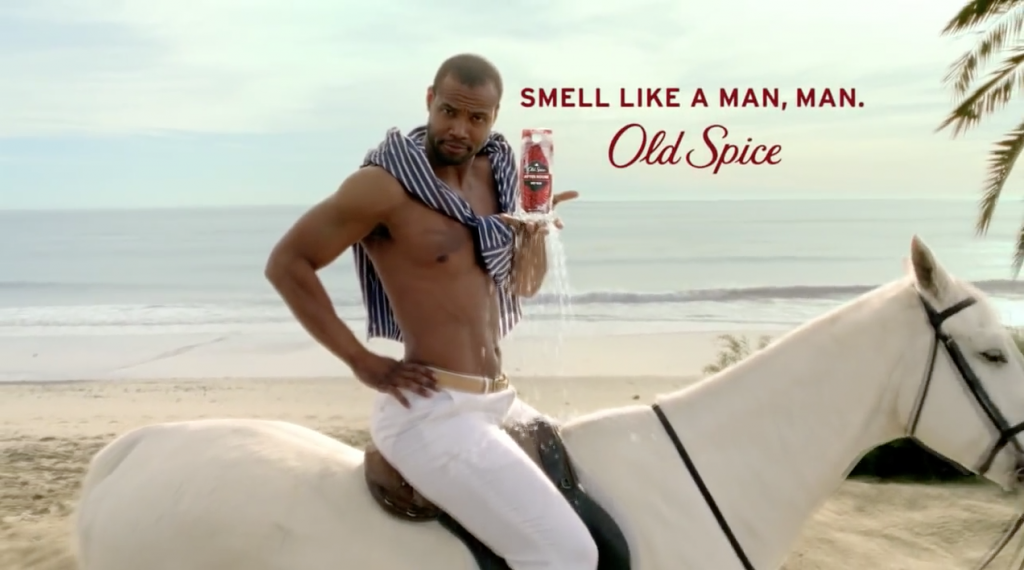 Source
SourceWhat’s the Use of a Branding Strategy, Anyway?
Sadly, many business owners overlook the branding strategy and move straight to the marketing phase. Well, ideally you would develop a brand strategy right after coming up with your business plan.
Remember, creating the logo design is not enough. That’s just one piece of the puzzle. Ultimately, the branding strategy framework informs every marketing campaign and piece of content you produce.
A strong brand strategy can strengthen your company and carries a lot of benefits.
Increased Market Share
A great brand strategy will increase your market share. Why, you ask?
Brands are perceptual entities. Ultimately, they are built by and within people’s minds. When consumers form enough positive associations of experiences, images, sounds, symbols, and so on — the brand is born.
So, to create a successful brand, the trick is to work on developing mental models. The more associations you create in people’s minds, the higher your chances of dominating the industry.
And the most effective way to wake your brand up in people’s minds is by strategizing. A powerful brand strategy process is like the North Star — it ensures that everything you do aligns with your brand’s identity. It guides you toward brand recognition. It guarantees that every step you take is consistent with your brand.
Once you’ve created a dense network of mental associations, the brand’s market position will shift. The goal is to be the first option people think of when purchasing products from your niche. The way you do this is by creating memorable brand assets and exposing potential customers to them in various situations.
If, for instance, I want to buy a pair of sneakers, the first option that pops into my head is Nike. Nike is the leading brand in its industry. And that’s only possible because of their brilliant brand strategy.
Customer loyalty
A well-crafted brand blueprint can secure the trust and loyalty of your customer base. Follow the strategy and you get a consistent, cohesive brand. The result is an emotional connection between the brand and its customers. Nurturing this emotional connection is the essence of company growth.
Without building these bridges between customers and brands, businesses cannot survive nowadays. It all starts with a strong strategy.
Possibility for Innovation
Disruptive and innovative businesses rely heavily on brand and business strategies. Now, why exactly do brand strategies drive innovation? Well, because a solid strategy is a blueprint: it gives you the why, the what, and the how of your brand.
Innovation requires creative and flexible practice inside a fixed, pre-established framework. And that is where brand innovation and brand strategy meet. Sure, innovation flourishes in a laissez-faire environment.
But it cannot be accomplished without strategic planning.
Employee Satisfaction, Performance, and Retention
What does brand strategy have to do with the satisfaction, performance, and retention of employees? Well, a lot. The issue is that due to silos and poor interdepartmental collaboration, brand strategy work is limited to the marketing department, when it should be shared by all departments.
Think about it.
A comprehensive brand strategy reveals and strengthens the brand’s core values. It highlights the WHY behind everything employees do. And just like that, work is infused with meaning. Victor Frankl wrote extensively about the importance of meaning in our lives. We are creatures of meaning. Without a sense of meaning, we feel stressed, confused, or bleak.
A clear brand purpose makes employees determined to find new ways of doing things and to persist in the face of challenges. Meaningful work can trigger flow states and is generally associated with well-being and engagement.
Purpose makes up for strong brands.
In this light, it makes sense that a world-class brand strategy can improve satisfaction, performance, and retention. Right?
How to build a comprehensive brand strategy?

Photo by Hello I’m Nik on Unsplash
Branding is all about gathering people around you and making them feel something. It’s about forming tribes of clients and potential customers that relate to your brand’s core values, mission, and purpose. And that doesn’t just happen by accident.
Mental imagery, trust, and connection can only be evoked when a comprehensive brand strategy is in place.
But how do you develop a brand strategy that stands out? Well, we’ve got you covered. Here is what you should do.
1. Answer These Questions First
The pillars of building a winning brand strategy are purpose, mission, and vision. According to brand adviser Marty Neumeier, you have to pinpoint these with precision.
While these terms are used interchangeably, they mean pretty different things. Brand purpose is the WHY of your business — beyond profit, of course. A brand’s purpose is fixed. It never changes.
Your brand’s mission is a goal for achieving that purpose. It’s an action-packed statement encompassing what the business wants to achieve, who they want to achieve it for, and why they want to support the target audience. The brand’s vision, on the other hand, refers to how you see the community or world at large changing because of your products or services.
Let’s take an example. Coursera.
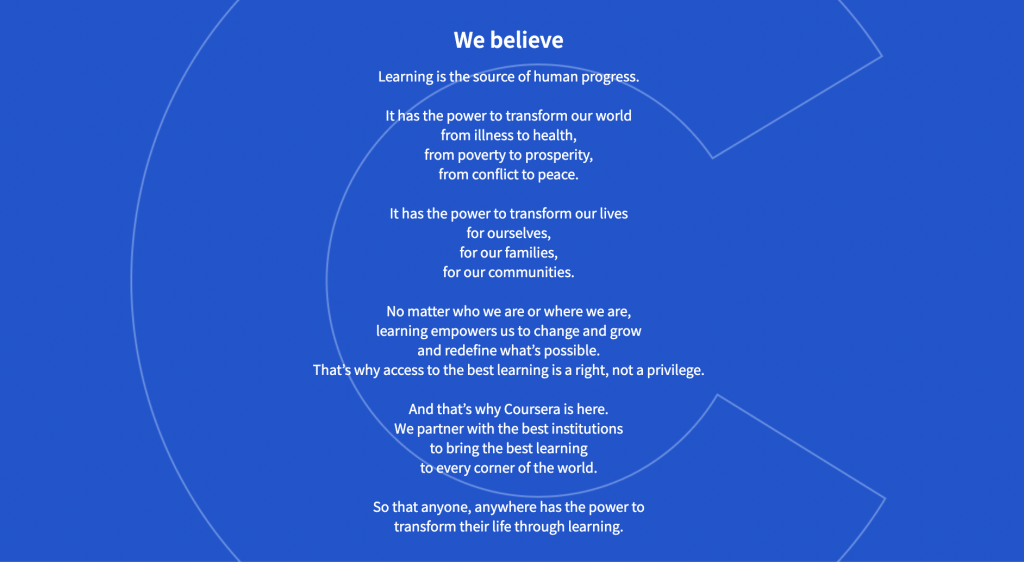 Source
SourceThis is their WHY or purpose: “Serving the world through learning.”
Their mission is“ to bring flexible, affordable, job-relevant online learning to individuals and organizations worldwide.”
And this is the way they envision the future: “We envision a world where anyone, anywhere has the power to transform their lives through learning.”
Coursera’s purpose for doing business is to foster learning. Through their mission of bringing online learning to anyone, they envision a future where anyone can transform their life by educating themselves.
A brand’s soul is also defined by its values. What principles guide your actions?
All these elements describe your brand’s beliefs. And they can lift or sink your business. Therefore, you must answer these questions. This way, your business, and brand will work in sync. A clear brand positioning means that you are more likely to attract customers and employees who are committed to the same values as you.
More so, knowing your brand in and out will ensure that your decisions are always aligned with your overall organizational goals.
| Wondering how to craft your purpose statement? Check out Xara’s dedicated article on the matter. |
2. Who are you here for?

Photo by Jon Tyson on Unsplash
Everything — from product development to brand elements, and marketing strategies, starts with the target audience.
To attract the right tribe, so to speak, you have to know your audience well. Performing target audience research is a must at this stage.
Remember, branding is all about the feelings and perceptions your business evokes in people’s minds. Beyond profitability and purpose, the products or services you offer are meant to help people, to improve their lives. To succeed at that, you need to get familiar with who they are.
3. Who are you up against?
You’ve learned everything there is to know about prospective clients. Now what? Well, it’s about time you “meet” your competition.
In an endless river of product choices, there is always competition if you look hard enough. How do you do that? With a competitive market analysis.
A competitive market analysis will illustrate who you’re competing with, how they can outshine your company, and what makes your business stand out.
4. Find the brand’s essence
After the research phase, you should have all the information you need to discover the brand’s essence. I say discover, since the essence is already there, waiting for you to uncover it.
Here are the three elements you need to reveal: brand personality, brand voice, and brand tone.
Brand Personality
How would you describe your brand if it were a person? Charismatic? Witty? Curious? That’s the personality of your brand. It is unique and consistent.
By looking at the beliefs and principles of your brand, you can usually get a peek at the brand’s personality. Having a clear image of these traits is crucial.
Brand personality informs other elements of branding, such as design or messaging. But where does your brand stand?
To find out, take a little time and go meta. Try to think of your brand as you would when describing a person. There are different dimensions to our personality. Likewise, a brand’s personality encompasses different dimensions: emotion, intelligence, characteristics, and behaviors.
For instance, some brands are emotion-driven, while others are inspired by hard data and thorough analysis. Take Microsoft. This brand embraces a data-driven personality. Microsoft evokes competence, simplicity, and steadfastness. It’s not pretentious, but rather down-to-earth and clear in its wording. And this has been consistent over the years.
How about your brand? How would you describe it? What style does it have? How does it behave?
Brand Voice
The brand’s voice derives from its personality. It refers to the way your brand expresses its personality through communication.
Imagine that you are at a party. You’re mingling through the crowd, and you get to meet plenty of people that night. One of them is chatty, outgoing, and charismatic. They’re the life of the party. Another person you’ve met is rather introverted. Sociable, but you met them while they were chatting one-on-one about philosophical issues.
How does your brand communicate? Make a list of companies that have a brand voice similar to the one you want your brand to have. The key here is to extrapolate from the brand’s traits and communicate that consistently, both internally and externally.
Brand Tone
While your voice stays consistent throughout all your communication, your tone is contextual. If your voice is compassionate and light-hearted, that’s what should come through. Your tone should evoke your voice, but it adapts to the type of content you’re producing.
If, for instance, you are writing a social media post, you can lead with light-heartedness. However, if you are creating a business presentation, you want your tone to be more formal, while staying true to your voice.
5. What’s your brand’s messaging?
The elements detailed in the previous sections make up the brand’s positioning. After you’ve figured out how your brand positions itself in the market, you can start crafting the messaging of the brand.
And it all begins with finding out what makes your company different.
These differentiation pillars set the foundation for the entire messaging of your brand. Think about as many distinguishing aspects of your business, then narrow that list down to two or three. For each differentiator, craft a compelling headline. These should highlight the unique value of each differentiator. Then, write three proof statements for each headline.
Now that you’ve got your unique value proposition all pinned down, you can start writing the messaging. A starting point should be the company’s tagline. This should highlight at least one benefit of your products. Also, it has to be short, catchy, intriguing, unique, emotional, and tailored to the target audience.
Here are some examples:
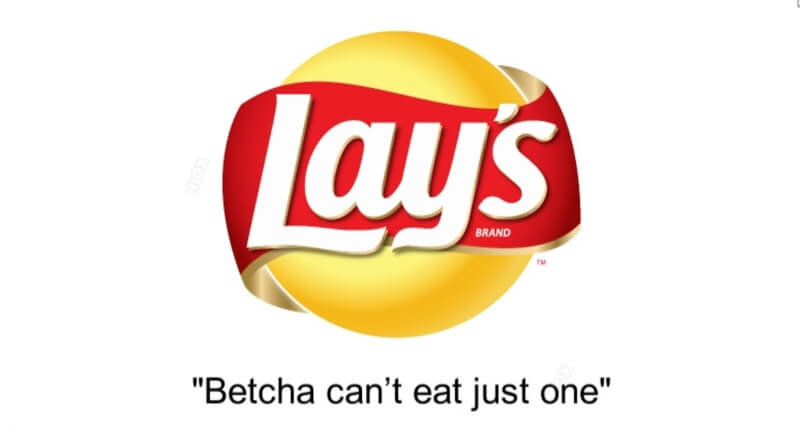 Source
Source 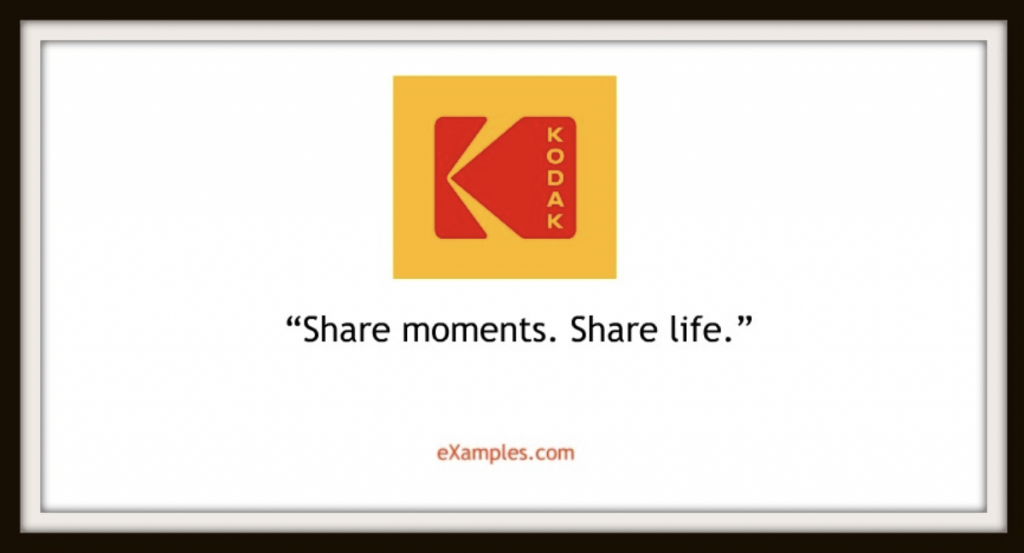 Source
Source 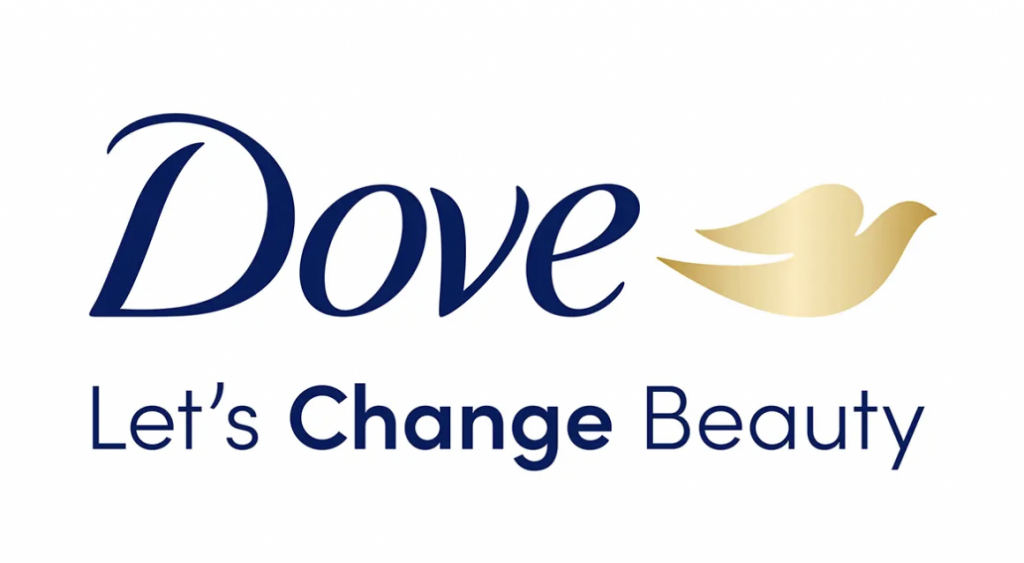 Source
SourceNext up: the elevator pitch. This is a snappy summary of your brand. You should be able to pitch it to someone on an elevator ride.
Depending on your goals and needs, you might have to craft other messaging, such as the about you section on your website, brand promise, or brand story.
6. How does your brand express itself visually?

Photo by Theme Photos on Unsplash
Your brand’s look and feel can set you apart from your competitors. They say not to judge a book by its cover. But we do it all the time.
Especially with brands. There are so many brands selling the same category of products. Judging by the book doesn’t work anymore.
And that’s the reason every brand needs its own unique look and feel. This is the face of the brand, the facade which reflects its heart and personality.
When creating your brand’s look, these are the elements you need to take into consideration:
→ Logo
→ Imagery
Whenever you design brand elements, you should adhere to a few basic branding principles:
Uniqueness and recognizability. Of course, your brand has to stand out. Its visual identity needs to be unique, with elements individual to your brand. Don’t build a bland brand. Build a memorable brand.
Cohesiveness. You can think of a brand’s visual identity as a puzzle. Each brand element connects with the other. It all makes sense once you add them up.
Trends and sustainability. Commit to your brand’s heart and customer’s needs, not to trends. Should you follow trends, do so only if a certain trend suits your brand’s personality.
Agility and flexibility. Brands are not static, motionless figures. They are ever-evolving and flexible. So, when designing your brand visual identity, always leave space for rebranding and change.
7. How do you plan to maintain brand consistency?
Brand guidelines will guarantee consistency throughout all the content you produce. This makes it easier to collaborate with other agencies or creators, since it provides clear directions.
The brand style guide should include visual identity elements, the brand’s purpose, mission, and values, as well as a buyer persona report. Alternatively, you can also include some standardized templates that employees can use in different contexts.
Xara Cloud has a wide selection of templates that you can customize:
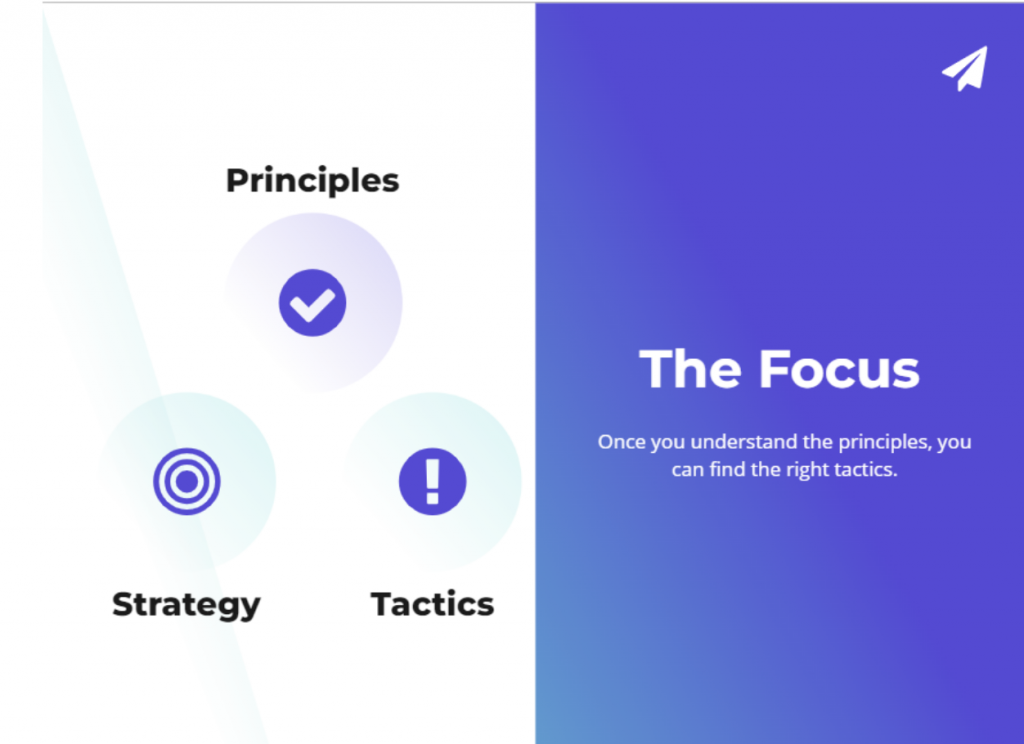 Facebook post template
Facebook post template  Pitch deck presentation template
Pitch deck presentation template 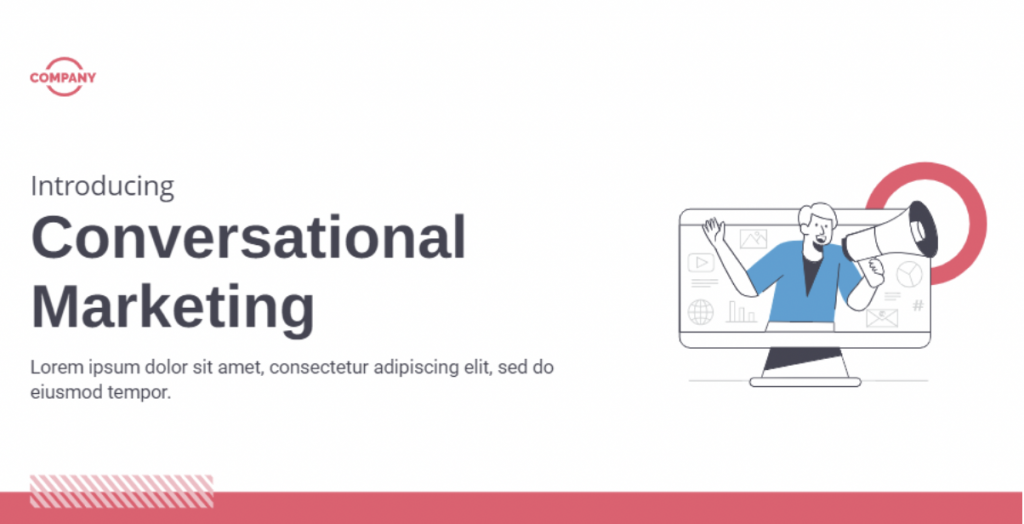 Twitter template
Twitter templatePut All The Pieces Together
Whatever you do, document the brand’s strategy. There’s nothing worse than working day and night on this strategy, only to see that other team members go off-script because they don’t have a hard copy of the strategy.
Which brings us to the second point. When strategizing, make it a collaborative process. Don’t make it just a marketing department endeavor, involve other team members as well.
This way, the strategy isn’t created in a vacuum and everyone can be on the same page about it. Plus, chances are that employees will be more committed to sticking to that strategy if they were involved in the development process as well. The best ideas are born when we are open to other perspectives.
Document Your Brand Strategy With Xara Cloud
Developing a brand strategy is not an easy feat. It takes focus, patience, creativity, and rigor. It can be overwhelming, for sure. But it can also be fun. Follow the steps in this guide and let your imagination soar.
If you already have your brand strategy, it’s time to document it. Whether you want to document your brand strategy or you want to create on-brand content— Xara Cloud is the document design tool for you. Try out Xara Cloud for free and see what it can do for your brand.
Sign up today for a free trial



 No credit card or phone number required.
No credit card or phone number required.